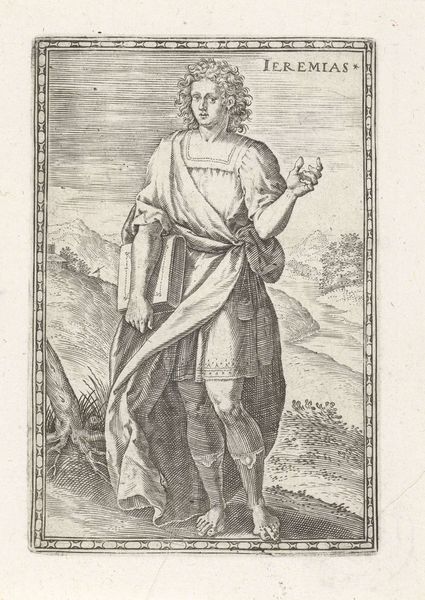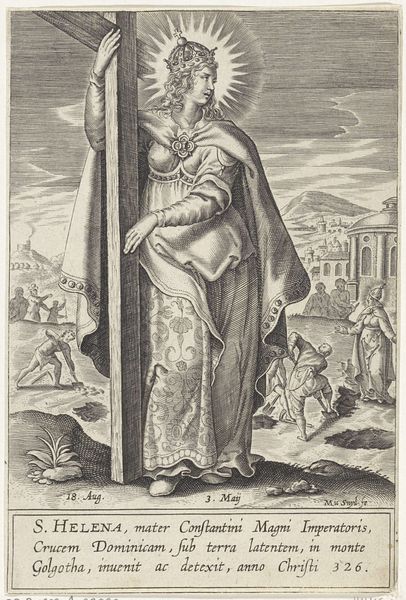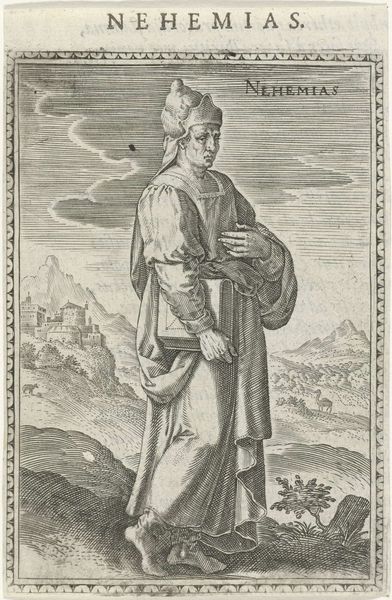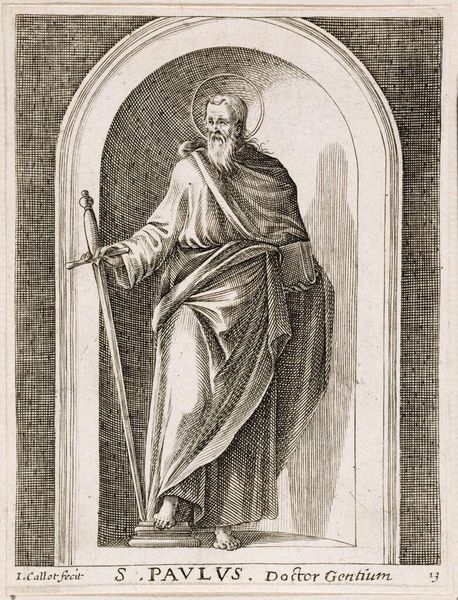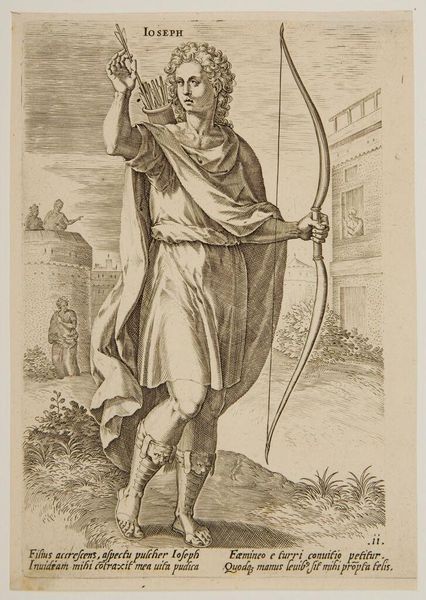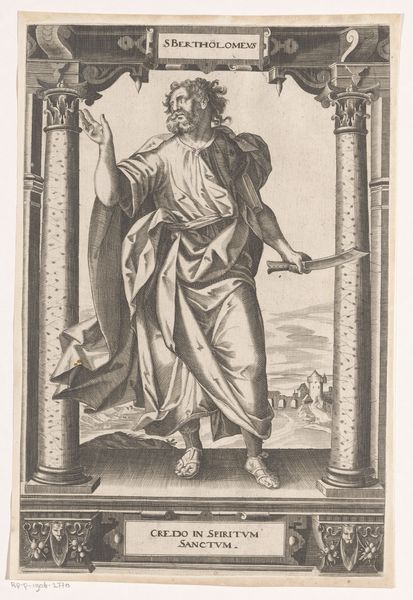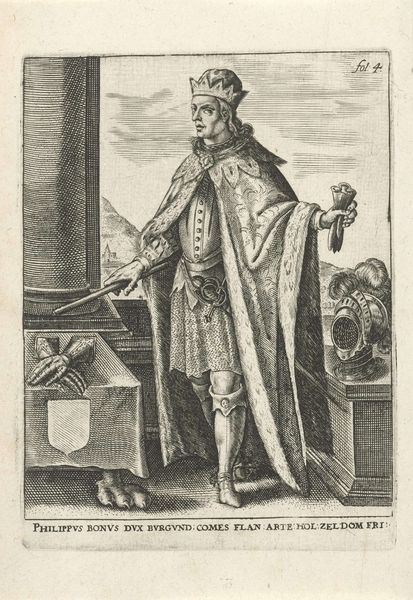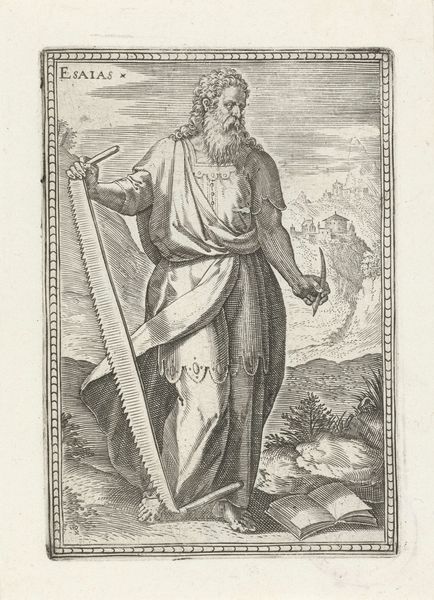
print, engraving
#
baroque
# print
#
figuration
#
line
#
history-painting
#
engraving
Dimensions: 184 mm (height) x 130 mm (width) (brutto)
Editor: This is "Sankt Thomas," an engraving by Nicolaes de Bruyn, created sometime between 1598 and 1601. It feels like a window into a very different world, doesn't it? I’m particularly struck by the figure's solemn presence. What key elements jump out to you? Curator: The most evocative image is the contrast between the figure of St. Thomas himself and the scenes flanking him. One the left, we see the Pentecost. Note the dove representing the Holy Spirit hovering above. And on the right, a classical building in an urban setting, evoking temporal, earthly concerns. The composition begs the question: how did De Bruyn portray doubt in the architecture of belief? Editor: Doubt? I hadn't immediately connected that, but now I see how the architecture contrasts with the certainty often associated with faith. Curator: Consider what St. Thomas represents. Known as "doubting Thomas" for his initial disbelief in Christ's resurrection, his character comes to hold symbolic significance as his story of disbelief eventually becomes an example of transformative faith. This cultural memory then echoes down to the engraving, informing not only our view of St. Thomas but, perhaps, even questioning our own sense of assuredness. How might contemporary viewers react, I wonder? Editor: It's amazing how much this single image seems to be balancing belief and skepticism. I initially thought of this image of "Saint Thomas" as devotional. However, after our chat I realized I should not simply trust what my eyes initially perceive; it may mask the painting's deeper implications. Curator: Precisely! And that deeper implication becomes so meaningful the more you look.
Comments
No comments
Be the first to comment and join the conversation on the ultimate creative platform.


